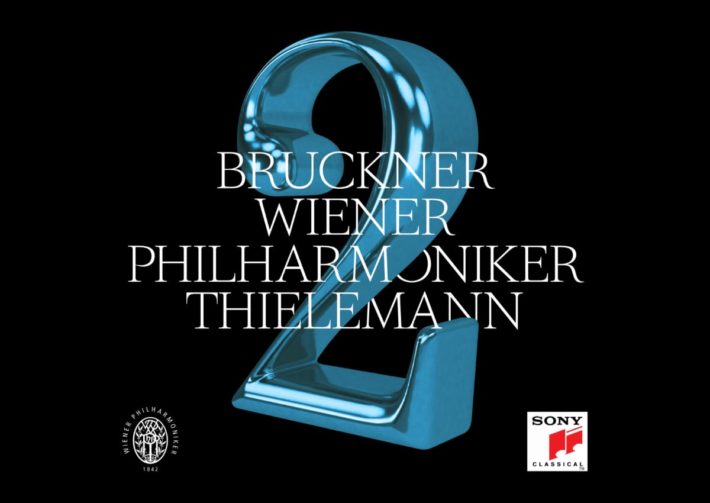This is the fourth installment in Thielemann’s Bruckner cycle with the Vienna Philharmonic (3, 4, and 8 have already been reviewed by my colleagues in these pages). The conductor has been building a reputation as a Bruckner interpreter since his time with the Munich Philharmonic and has continued this work in recent years as the director of the Staatskapelle Dresden.
The musicianship of the Vienna Philharmonic remains impeccable. Anyone unfamiliar with this orchestra’s sound can appreciate it by hearing the beautiful layering of voices in the third movement scherzo. For Brucknerians who have grown accustomed to a biting German brass, be mindful that Vienna still uses pumpenventil horns—just as they did when Bruckner debuted the piece with them in 1873—making for a markedly more mellow sound. To appreciate the warmth of these Viennese horns, one should hear the brief horn solo from 3’00”—3’30” on track 2. For a taste of the brighter sound, one can compare the horns in the first movement’s opening passage against Konwitschny/Berlin Radio Symphony (1951), van Karajan/Berlin (1981), or Wand/Cologne (1982).
What struck me most in listening to this recording was Thielemann’s faithfulness to the score. Bruckner conductors are well-known for the liberties they take with regards to tempos and dynamics. Thielemann, by comparison, has a quite modest temperament. Yet Thielemann’s reading brings forth several dynamic subtleties that are less apparent in other recordings, most of which cannot be counted as differences between Carragan’s edition of the 1877 score (used by Thielemann) and those of Haas and Nowak (used by most others). For example, has anyone managed to capture the contrasting piano and mezzoforte layers of the first movement’s opening measures with such exactitude? And throughout the slow movement, Thielemann nears perfection in interpreting Bruckner’s demand that the Andante be Freierlich, etwas bewegt (“Solemn, [but] somewhat accelerated”). The etwas bewegt instruction has yielded some nearly comical (rather than solemn) results in the past: I think especially of Barenboim/Staatskapelle Berlin (2012), where the pizzicato sections seem much too playful. Listen from the beginning of this movement (track 2) for a close look at Theielmann’s tempo choices in this movement, first contrasting with the accelerando that begins at 3’35”, followed by a ritenuto at 3’45”, and finally a return to first tempo at 3’54”. For me, Thielemann’s reading of the second movement is the greatest accomplishment of this recording.
Related Classical Music Reviews
- Review: Bruckner Symphonies 2 & 8 – Gewandhaus, Nelsons
- Review: Bruckner – Symphony No. 6 – BBC Philharmonic, Mena
- Review: Bruckner, Stravinsky – Mass for Choir and Wind – Rundfunkchor Berlin
Nevertheless, Thielemann’s interpretation is missing something. What is it that draws so many of us to Bruckner but the emotional catharsis experienced in listening to his work? Case in point: The Finnish composer Jean Sibelius, upon hearing Bruckner’s Symphony No. 5, wrote that he was moved to tears and experienced a spiritual transformation that affected him for days following. Such experiences remain common. Yet there was no such emotional reckoning present in this performance. In reviewing Thielemann’s interpretations of Nos. 4 and 8 in this cycle, my colleague David A. McConnell also observed a certain aloofness on this point. While this performance is not sterile, I am not certain that it is, as one says, “compelling.” Perhaps it could be called an academic reading for its faithfulness to the manuscript, but to what end? The conductors of Bruckner’s era took great liberties in their readings, and most Bruckner conductors have done so as well. Even Günter Wand, who famously believed there could be an autonomy of the manuscript over the taste of the conductor, does not feel so distant in his interpretation of this symphony. In spite of my admiration for the elements of this recording mentioned above, I unfortunately cannot say that I was particularly moved by Thielemann’s reading as a whole, and this missing piece could pose a major setback in attracting the following of longtime Brucknerians.
In the end, my judgment of the album is conflicted. As a matter of taste, this is not my Bruckner. Nevertheless, Thielemann’s literalism potentially has value as such. His here is not a conventional approach to Bruckner’s work, but I can imagine an appeal for those who have been put off in the past by the so-called “maestros and mystics” style of interpreting the composer’s symphonies.

Bruckner Symphony No. 2, WAB 102
Vienna Philharmonic Orchestra
Christian Thielemann – Conductor
Sony Classical, CD 19439914122
Recommended Comparisons
Read more classical music reviews or visit The Classic Review Amazon store
Follow Us and Comment:
Get our periodic classical music newsletter with our recent reviews, news and beginners guides.
We respect your privacy.









